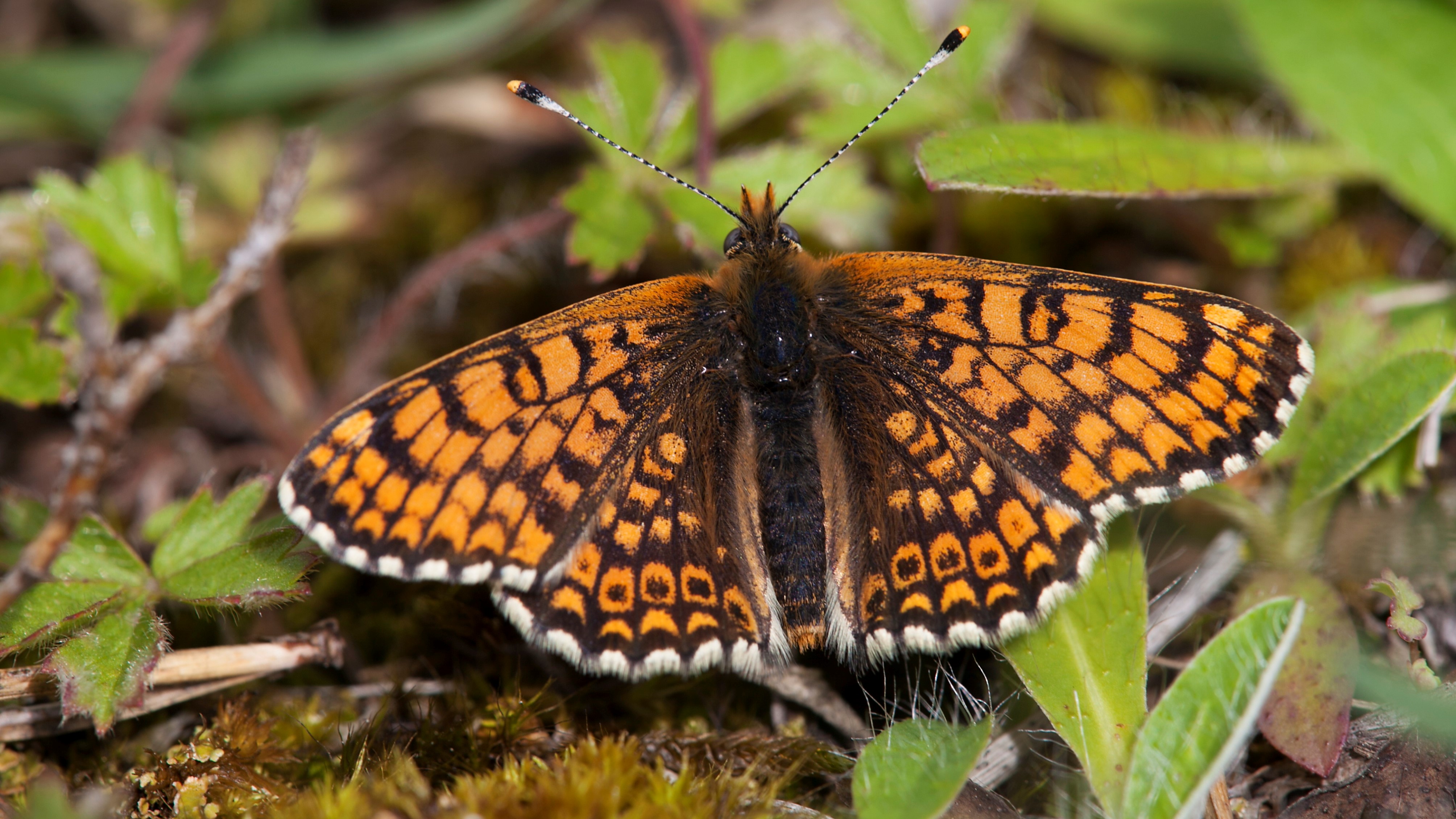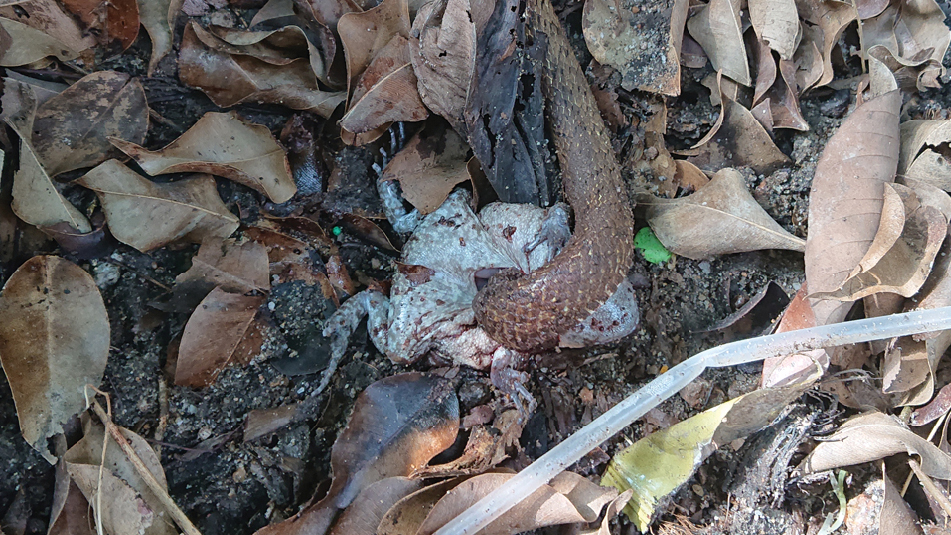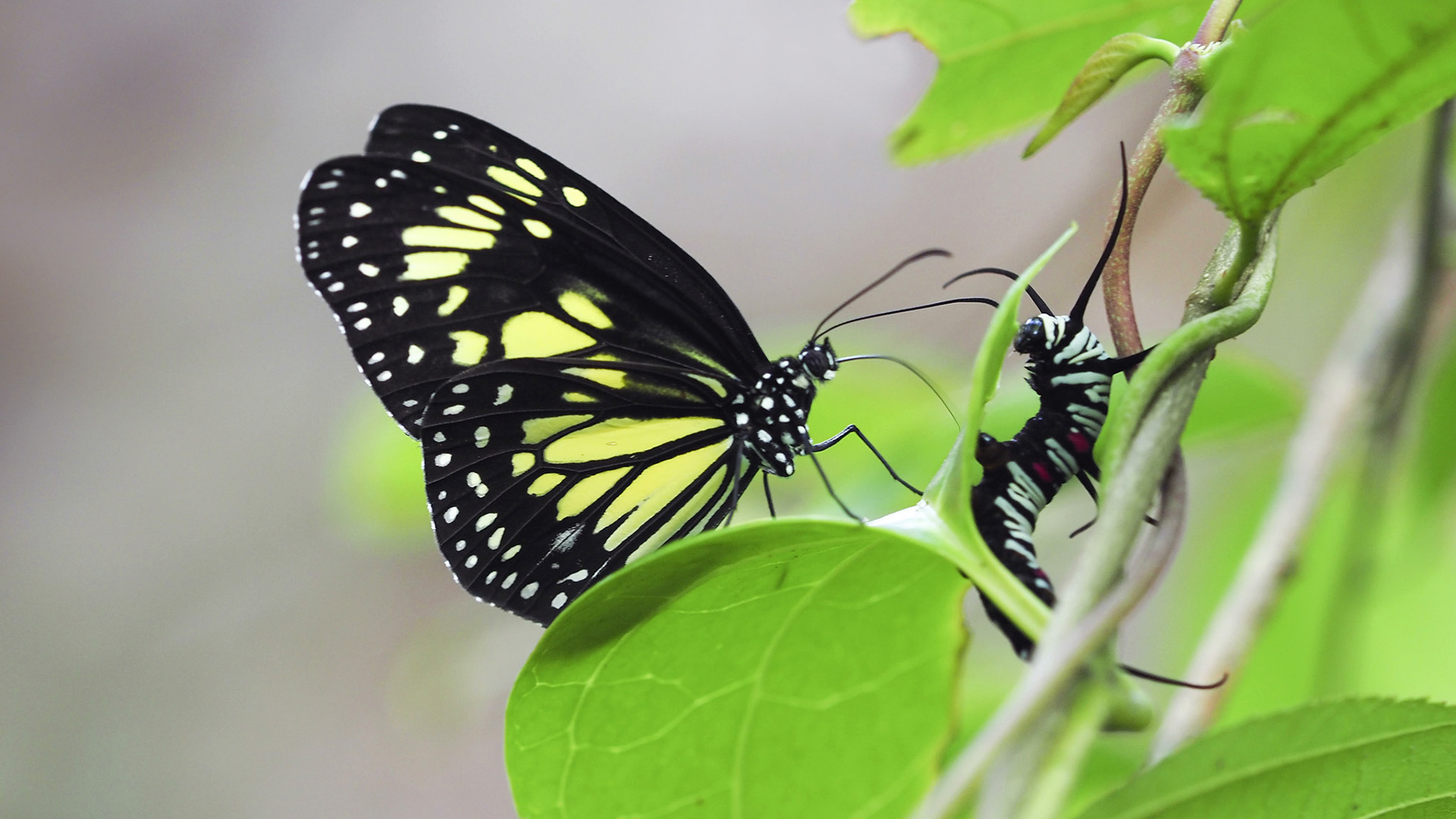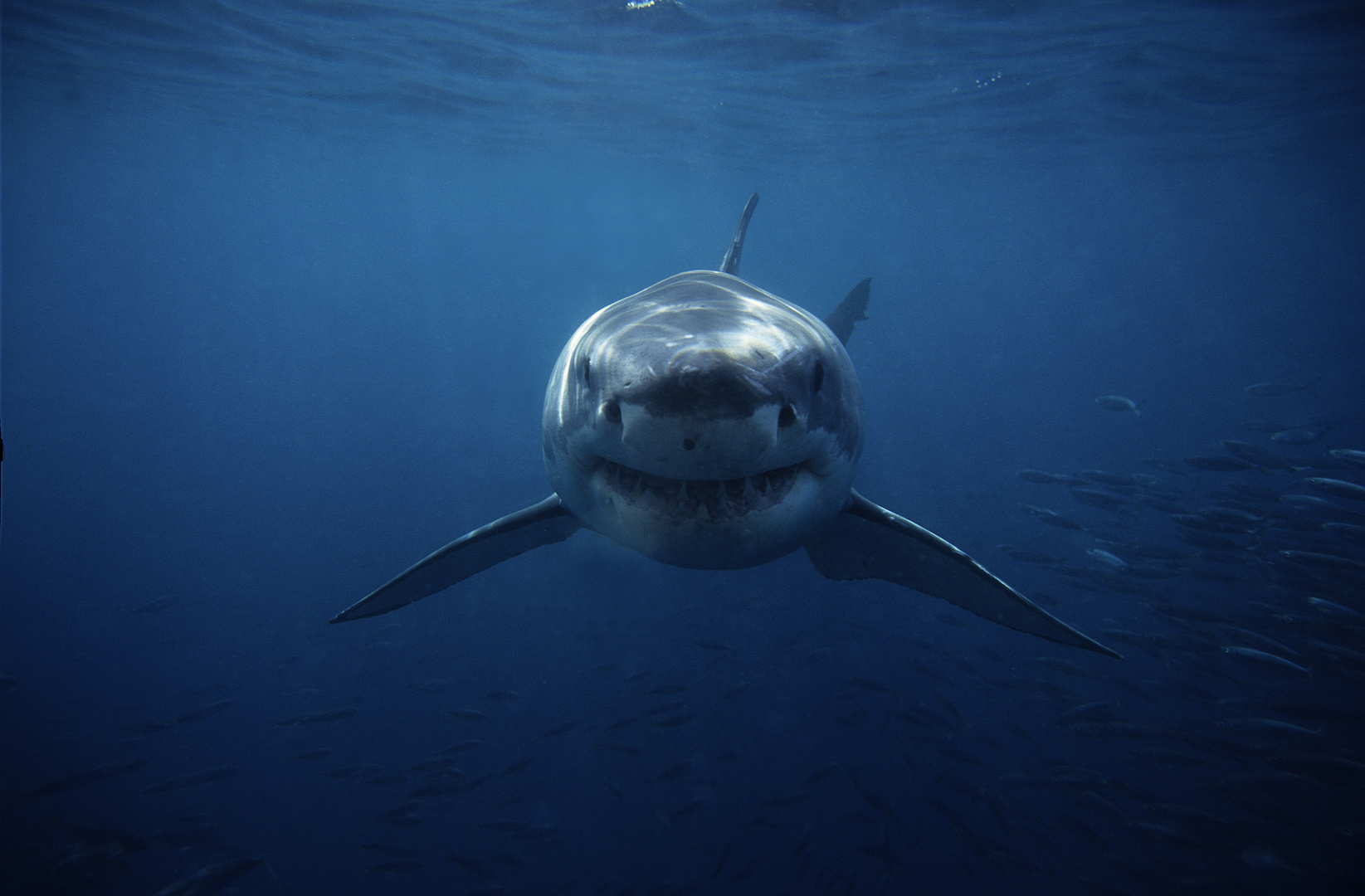Social vomit and hairy eyeballs: 10 times animals grossed us out in 2021
Necrophilia, parasitic infection, carcass-shredding — what's not to like?

Nature is beautiful — except when it's not. In fact, sometimes it's a little stomach-turning, or even downright horrific. In 2021, we saw plenty of examples that demonstrated just how gruesome nature could be. From sex-crazed zombies to tongue-gobbling parasites, here are some of the biggest gross-outs in science news this year.
Mind-controlled necrophiliacs
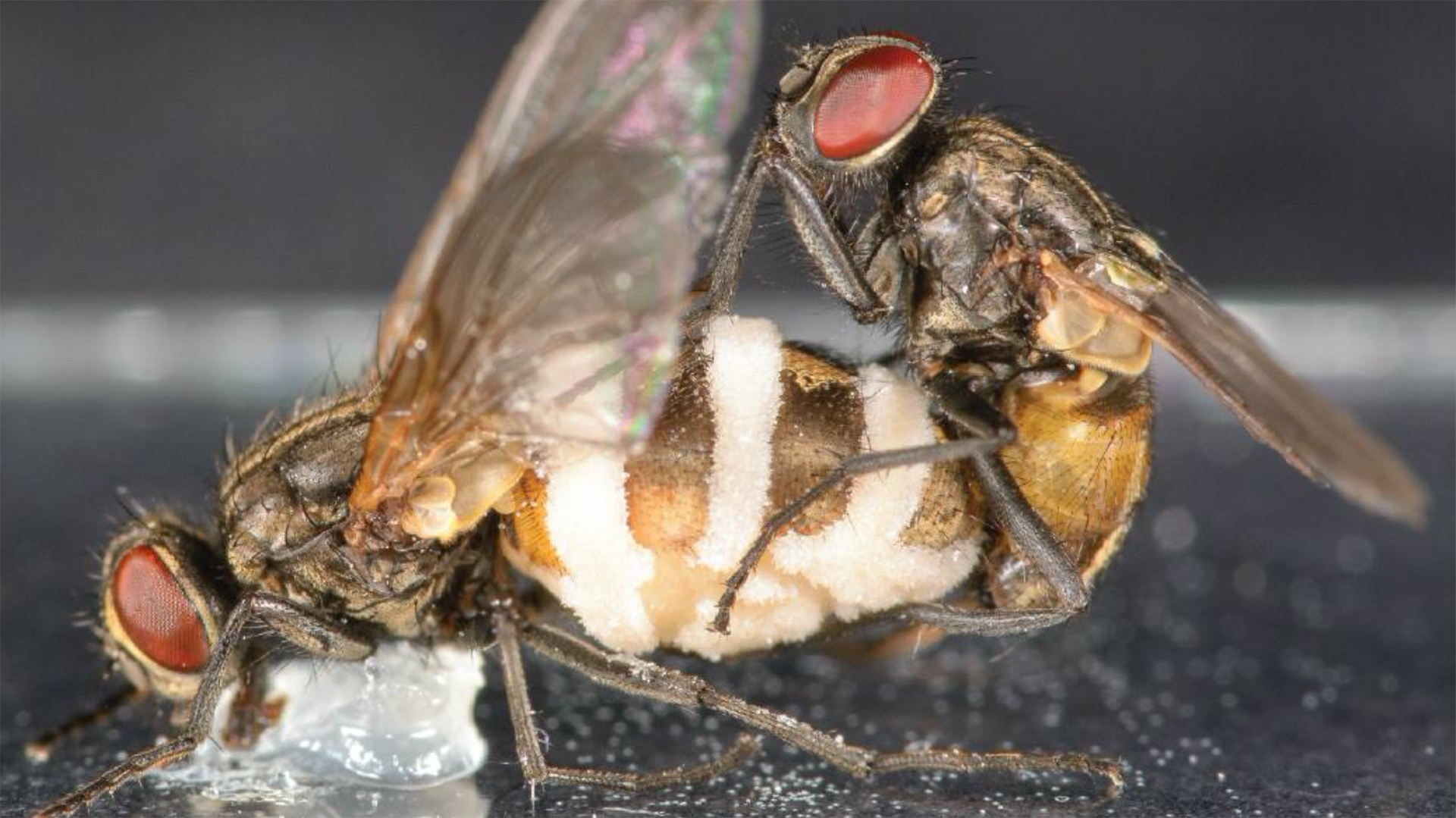
A type of fungus that affects house flies eats them from the inside out, consuming the flies' bodies after hijacking their brains and making them climb elevated surfaces to disperse fungal spores. Even after infected females have died, the fungus still has a use for the corpses. From inside each corpse, the fungus emits a scent that lures male flies and compels them to mate with the dead females, in order to distribute the fungal spores even more widely.
Read more: Mind-controlling fungus makes male flies mate with dead, infected females
Fuzzy eyeballs
A rare and bizarre condition affecting a male deer in Tennessee caused a dense layer of hair to sprout from its eyeballs, leaving the corneas completely covered. Known as corneal dermoids, the growths were benign tumors made up of skin tissue containing hair follicles, and they likely formed early in the animal's development. As the deer grew, what would normally have been clear corneal tissue was instead covered by a layer of skin and hair, obscuring the animal's vision.
Read more: Why a dazed deer in Tennessee had hair growing from its eyeballs
Stomach bursters
A population of Melitaea cinxia butterflies that an ecologist released on a Finnish archipelago in 1991 introduced a Russian nesting doll set of parasites to the island ecosystem. Tucked away inside the caterpillars were the eggs and larvae of a parasitic wasp, Hyposoter horticola. And hiding inside the Hyposoter larvae was a second, smaller parasite: another wasp, Mesochorus stigmaticus. The larger wasp species hatches and grows inside the caterpillar, eventually bursting through the insect's body and killing it. But while Hyposoter grows, so too does the Mesochorus parasite, which bursts out of the living body of its wasp host and then exits the corpse of the caterpillar.
Read more: 'Russian doll' set of stomach-bursting parasites released inside butterfly on remote Finnish island
Get the world’s most fascinating discoveries delivered straight to your inbox.
Rectal mushroom
When scientists discovered a tiny, 50 million-year-old carpenter ant preserved in amber, they noticed that the ant's body contained a little something extra: tendrils of a parasitic fungus that culminated in a bulbous cap poking from the insect's posterior. The piece of amber came from the Baltic region, and DNA analysis revealed that the fungus was a previously unknown species, which the researchers named Allocordyceps baltica. Had the insect and fungus not been engulfed by sticky tree resin and locked in an amber tomb, the mushroom that stuck out of the ant's rear-end would have released spores as part of the fungus's reproductive cycle.
Tongue-eaters
Here's a relationship that's in questionable taste: A parasitic isopod replaced the tongue of a fish that was recently caught in Texas. Also known as a tongue-eating louse, the most well-known species of this isopod is Cymothoa exigua. Juvenile isopods swim inside a fish's mouth by entering through the gills; they then clasp onto the tongue and cut off the blood supply until the organ eventually withers and falls off. The growing isopod then replaces the tongue in the fish's mouth. But this process doesn't kill the fish, which can coexist with these parasites for years.
Read more: 'Tongue-eating' lice invade fish's mouth in this year's creepiest Halloween photo
A taste for organs
Mmmmm, organs. Asian knife-toothed kukri snakes know what they like, and what they like are frog organs, which are preferably consumed while their prey is still alive. Researchers observed multiple instances of the snakes feasting on organs from frogs in Thailand, Vietnam and Hong Kong. Kukri snakes typically use their daggerlike teeth to slice open eggs, but their teeth are equally effective when used as slashing weapons to expose frogs' innards. Two of the snakes were seen swallowing their frogs whole — but only after consuming the organs first, the scientists reported.
Social vomit
Social networks for humans might be somewhat less popular if people had to build their connections with vomit. But that system seems to work just fine for ants, which forge bonds by vomiting into each others' mouths. Known as trophallaxis, this practice allows ants to share proteins, nutrients and hormones, and it strengthens connections between colony members. An ant colony can contain thousands of individuals divided into groups, each performing specialized tasks that can affect their stomach contents. But when those contents are passed from mouth to mouth, the entire colony can share an individual's nutritional and hormonal benefits.
Read more: Ants vomit into each other's mouths to form social bonds
Caterpillar drinkers
Of course, 2021 would be the year that scientists informed us about butterflies slashing open caterpillars to drink their insides. Researchers in Indonesia watched as seven species of milkweed butterflies drank from "wounded and oozing caterpillars," in grisly meals that sometimes lasted for hours. Using tiny claws on their feet, the butterflies carved gashes in caterpillars' bodies to expose the liquid inside; because caterpillars eat milkweed plants, their body juices were brimming with chemicals from the chewed-up leaves. This made the caterpillars delicious targets for male butterflies, which use milkweed compounds to help them attract females.
Read more: Milkweed butterflies tear open caterpillars and drink them alive
Carcass shredders
It's not every day that marine biologists get to observe (and film) a group of hungry great white sharks tearing a humpback whale carcass into bite-size chunks. A team of researchers in Massachusetts embarked on a tagging mission in August and were looking for basking sharks when they spotted a shark "feeding frenzy" around the floating corpse of a young humpback in Stellwagen Bank National Marine Sanctuary. The scientists captured photos and video of the carnage and were even able to attach acoustic sensors to some of the great white sharks as they fed; that way, they could later track the movements and behaviors of these deep-sea predators.
Read more: 'Unimaginable' video shows great white sharks ripping humpback whale carcass to shreds
Butt-busting fungus
During the spring and into the summer of 2021, black-bodied, red-eyed cicadas emerged in the northeastern United States in the billions. This mass emergence happens once every 17 years, and a deadly fungus called Massospora cicadina, which only parasitizes cicadas, follows the same 17-year timetable. Fungal spores in soil cling to the exoskeleton of a cicada nymph after it digs its way out of the ground; the spores then penetrate the cicada's body and multiply as the nymph metamorphoses into an adult. Eventually, the fungus becomes so dense inside the living insect that it replaces the cicada's rear-end with a solid mass of yellow spores that are visible when that part of the cicada's exoskeleton cracks and falls off. The fungus also changes cicada behavior, making the insect mate more frequently — and thereby infect more cicadas.
Read more: Some Brood X cicadas will be sex-crazed zombies with disintegrating butts
Originally published on Live Science.

Mindy Weisberger is a science journalist and author of "Rise of the Zombie Bugs: The Surprising Science of Parasitic Mind-Control" (Hopkins Press). She formerly edited for Scholastic and was a channel editor and senior writer for Live Science. She has reported on general science, covering climate change, paleontology, biology and space. Mindy studied film at Columbia University; prior to LS, she produced, wrote and directed media for the American Museum of Natural History in NYC. Her videos about dinosaurs, astrophysics, biodiversity and evolution appear in museums and science centers worldwide, earning awards such as the CINE Golden Eagle and the Communicator Award of Excellence. Her writing has also appeared in Scientific American, The Washington Post, How It Works Magazine and CNN.



